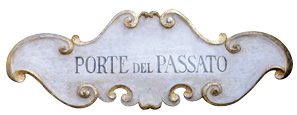THE
PATINAS
THE
PATINAS

In the logic that inspires the creativity of our company, to characterize its style in a unique way, the patinas represent the distinctive element. Each of our artifacts, each of our creations has a lived, unique and unrepeatable patina. Wood and iron are treated with respect, worked with ancient artisan techniques while preserving the original methods of the past. The final result leads to unmistakably recognizable and identifiable objects as “Doors of the Past”. Here are some examples. Our waxes are natural; beeswaxes heated and passed on the surface with the right dexterity. The colors are all natural, composed by us and also calibrated. In lacquering, the plastering, gilding on bolus and meccatura phase are performed on consistent bases and with many processing steps; in this way the lacquering or pickling are substantial and full-bodied. The aging techniques require many steps and, above all, they start from the basic conception that an ancient aspect of the surface comes from a painstaking work starting from the base of the process (that is to say from the plastering, in the case of lacquers and from the cleaning, in case of of ancient natural woods). Respect for ancient woods is central and fundamental. Cleaning is allowed as long as it does not lead to alteration of the surfaces, which in fact should show even more the lived-in aspect that the passage of time has given through it. The ancient construction techniques, such as joints, turned nails and testaroli help to give the product an even more experienced and special final patina. An excellent patina will make an object more lovable for those who love the artisan culture of wood. It is not a question of copies, but of conservation and re-evaluation of the aesthetic and functional qualities of the past, in order to keep alive the concept of the unique and unrepeatable work of the artefact.
THE
TASSELS
THE
TASSELS

SHAKER
STYLE
SHAKER
STYLE

Essentiality as an act of faith The Shaker style takes its name from the so-called “Shaking Quakers”, in fact the proselytes of this large religious community, which spread from 1774 in Massachusetts (USA) and grew in the following decades especially in the American states of New England, during religious ceremonies they used to dance, waving their hands and feet, to cleanse themselves of sins and negative influences. At the base of the Shaker philosophy of life were: the value of collectivity, common property, celibacy, peace, gender equality. The Shakers, inspired by these principles, established an absolute identity between the form and function of things, guided by an aesthetic concept that makes beauty reside only in utility. This is why they anticipated the theories of modern design by more than a century by eliminating any non-functional element from the furnishings and objects they built, creating a unique style characterized by essentiality. From this “sectarian” origin, the Shaker style has spread, conquering the taste of Americans first and then of the world, but retaining its distinctive features in the simplicity of the lines that shape wood, the favorite raw material and divine gift. The feeling that even today a pure Shaker style furniture transmits is that of cleanliness, perfection, order, extreme functionality and practicality. The home environment in which this style finds its natural attitude and certainly the kitchen, where the Shaker dictate that every object must have and keep its exact place, finds the most obvious application. With an austere but warmly welcoming beauty, the Shaker-style kitchen has never been more appreciated than today, in the whole world. The natural finish woods of the first Shaker furniture have left space, or are well combined, with more or less full-bodied lacquers, ranging from lighter shades of whites and pastel colors to decidedly stronger and darker shades. The lines of the doors on the capacious shelves are simple, linear, hinting in the many timid variations that embellish a slightly richer Shaker, but without forgetting its puritanical character. The extremely versatile modularity of the Shaker-style artisanal kitchen allows you to make the most of the space available in an environment, which can be optimized by placing it in contact and overlapping in continuity solutions between the various hanging container elements. The choice and introduction of many characteristic accessories of the artisan Country Kitchen such as plate racks, coppersmiths, shelves is greatly facilitated by the aesthetic ductility of the Shaker lines, which allows even usually only structural elements such as hoods and lowered columns to be contained. The innate simplicity of the Shaker design also makes it extremely suitable for combinations with many other styles of furniture, making possible infinite combinations of sure aesthetic impact. All this is combined with a great pleasure of use and an atmosphere of undoubted welcome.
GUSTAVIAN
STYLE
GUSTAVIAN
STYLE

